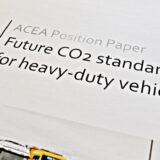EU announces binding greenhouse gas emissions targets, strategy on low-emission vehicles
The European Commission yesterday unveiled binding annual greenhouse gas emissions targets for member-states from 2021-2030 for the transport, buildings, agriculture, waste, land use and forestry sectors.
The targets were calculated based on the countries’ gross domestic product (GDP) per capita, their size and the share of agriculture in their overall economy, ranging from 0% for Bulgaria, the poorest country in the EU, to 40% for Luxembourg and Sweden, which are among the wealthiest.
The European Commission said it is working to keep the EU competitive as the global social economic model changes, following the impetus to move towards a modern and low-carbon economy set by the Paris Agreement on climate change last year.
“With the proposed reform of the Emissions Trading System last year and today’s proposal on greenhouse gas emissions targets for Member States, we anchor the 2030 Energy and Climate framework in legislation,” said Vice-President in charge of the Energy Union Maroš Šefčovič.
In 2014, the EU agreed to collectively reduce greenhouse gas emissions by at least 40% by 2030 compared to 1990 levels across all sectors of the economy.
The European Commission also presented a strategy on low-emission mobility, setting the course for the development of EU-wide measures on low and zero-emission vehicles and alternative low-emissions fuels.
“Transport accounts for a quarter of Europe’s greenhouse gas emissions and is a main cause of air pollution,” said EU Commissioner for Transport Violeta Bulc. “The transition to low-emission mobility is therefore essential to reach the EU’s ambitious climate objectives and to improve the quality of life in our cities. It is also an opportunity to modernise the EU’s economy and keep Europe’s industry competitive. The Strategy we adopted today presents a roadmap towards low-emission mobility and will give an impetus to that shift.”
Currently, only 0.7% of Europe’s cars and trucks are low- or zero-emitting. As the EU has expressed its collective desire to move towards mostly zero-emitting cars by 2050, a market share of up to 19% would be needed by 2030.












